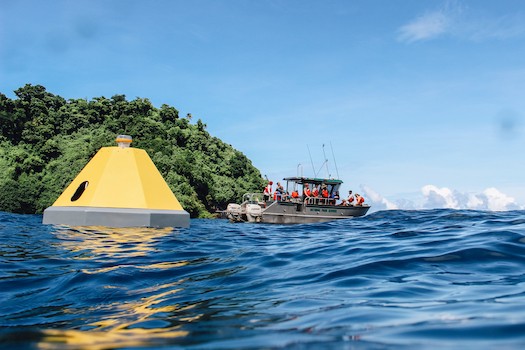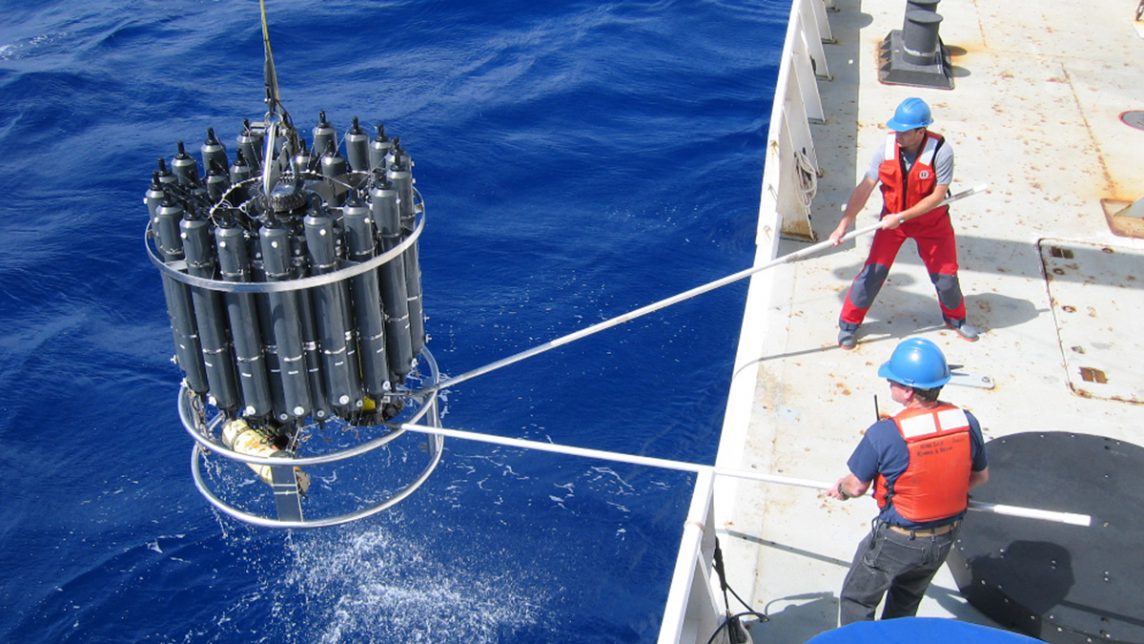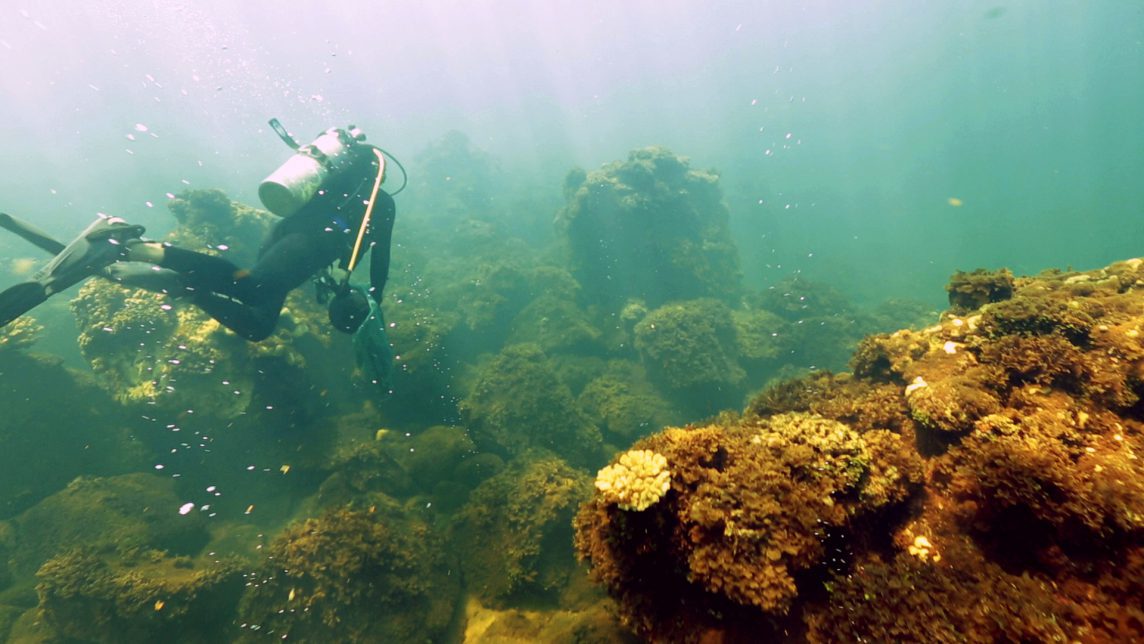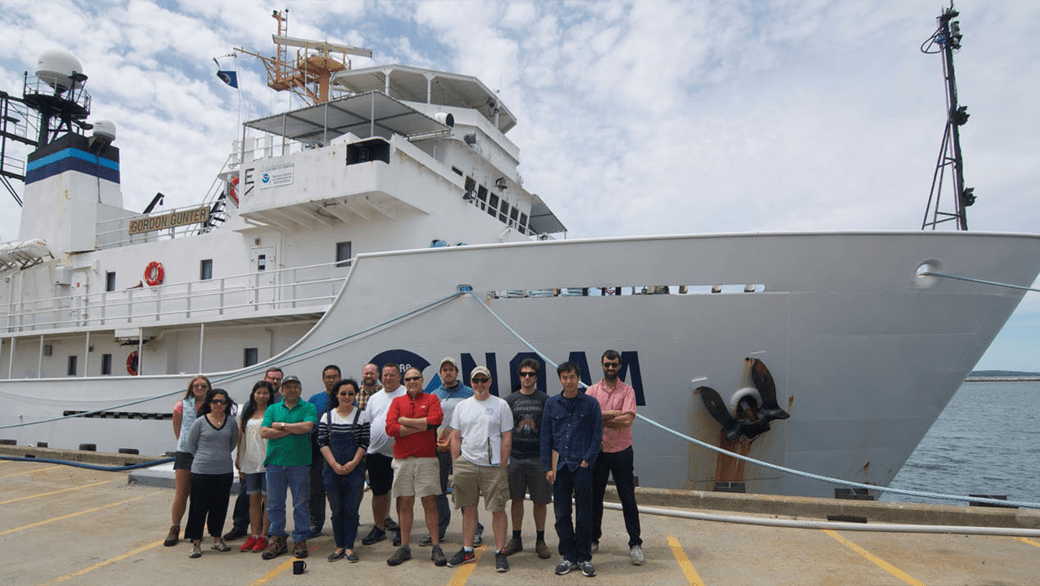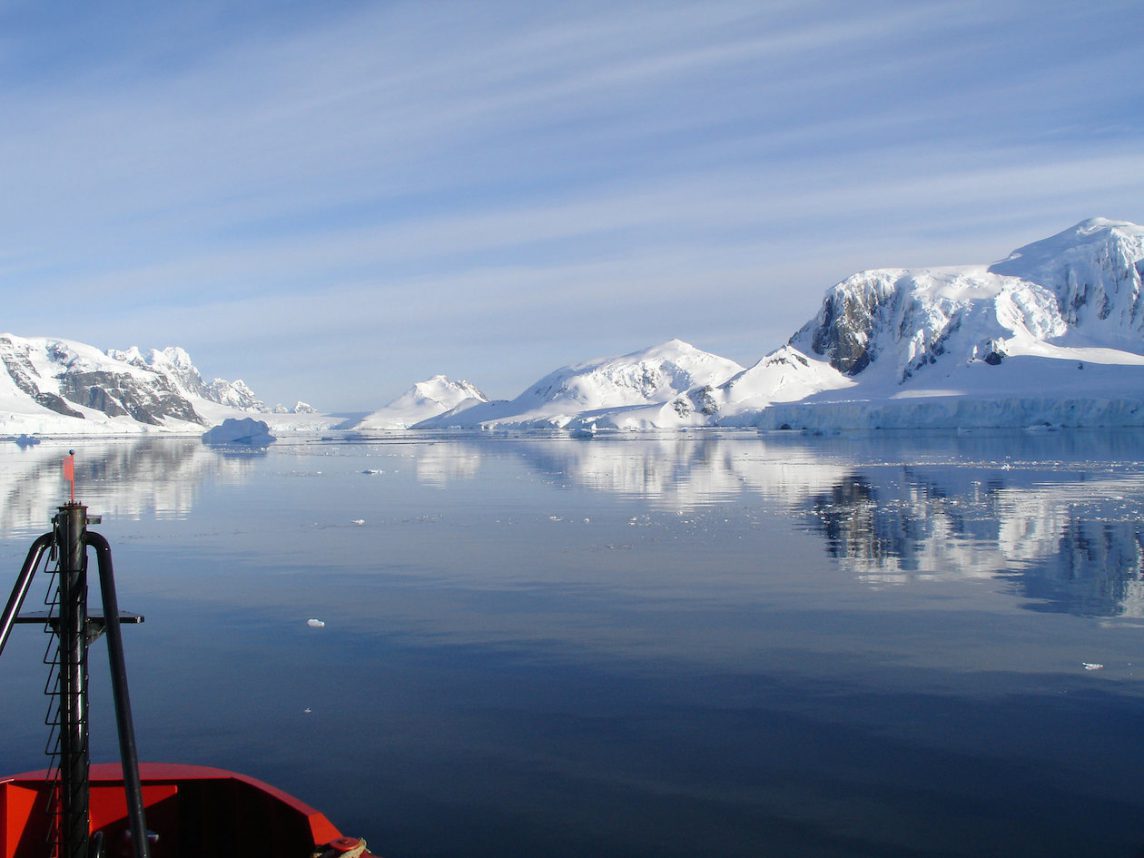NOAA and partners have launched a new buoy in Fagatele Bay within NOAA’s National Marine Sanctuary of American Samoa to measure the amount of carbon dioxide in the waters around a vibrant tropical coral reef ecosystem. “This new monitoring effort in a remote area of the Pacific Ocean will not only advance our understanding of changing ocean chemistry in this valuable and vibrant coral ecosystem but will also help us communicate these changes to diverse stakeholders in the Pacific Islands and across the United States,” said Derek Manzello, coral ecologist with NOAA’s Atlantic Oceanographic and Meteorological Laboratory.
Global Ocean is Absorbing More Carbon from Fossil Fuel Emissions
The new research published by NOAA and international partners in Science finds as carbon dioxide emissions have increased in the atmosphere, the ocean has absorbed a greater volume of emissions. Though the volume of carbon dioxide going into the ocean is increasing, the percentage of emissions — about 31 percent — absorbed by it has remained relatively stable when compared to the first survey of carbon in the global ocean published in 2004.
Increased Erosion at Acidified Coral Reefs
Corals live and thrive by maintaining a careful balance between their growth rate and the rate of erosion. Scientists already know the projected increases in carbon dioxide in our global oceans, known as ocean acidification, will slow the rate at which corals build the hard calcium carbonate skeletons that are the foundation of their habitat. A new study published online today in PLOS ONE demonstrates that in naturally highly acidified waters, these coral skeletons will also face increased erosion from microscopic organisms, called bioerosion. The result is accelerated breakdown and loss of reef structures, and potentially the loss of essential habitat.
AOML Oceanographer Rik Wanninkhof Selected as Senior Technical Scientist
NOAA selected AOML oceanographer Dr. Rik Wanninkhof in October 2015 to become a Senior Technical Scientist, the highest attainable level for federal research scientists within NOAA. Rik is an internationally recognized authority on air-sea gas transfer with close to 25 years of experience studying the effects of atmospheric carbon dioxide on the ocean. Senior Technical Scientist positions are held by individuals who achieve national and/or international distinction in their field through their high-level research.
Volcano Spewing Carbon Dioxide Drives Coral to Give Way to Algae
Scientists from NOAA and the Cooperative Institute for Marine and Atmospheric Studies at the University of Miami have documented a dramatic shift from vibrant coral communities to carpets of algae in remote Pacific Ocean waters where an undersea volcano spews carbon dioxide.
AOML Joins Ocean Acidification Program Research Cruise Along U.S. East Coast
A team of researchers, including scientists from AOML and the University of Miami, set sail June 19th on a research cruise aboard the NOAA ship Gordon Gunter to provide increased understanding of ocean acidification and its drivers along the U.S. East coast. The cruise, which is part of a larger effort supported by NOAA’s Ocean Acidification Program, investigated near-shore and deep waters, and provided researchers with more detailed information about changing ocean chemistry in different environments.
Ocean acidification is a fundamental change in ocean chemistry involving a progressive decline in pH over decades caused primarily by the absorption of increasing carbon dioxide emissions. Additionally, freshwater and nutrient run off from the coasts can alter seawater chemistry. The rise in dissolved CO2 and concurrent drop in pH (lower pH indicates higher acidity), changes ocean chemistry in a way that robs marine organisms, such as mollusks and corals, of the carbonate ions they need to build shells and skeletons. At the same time, the increasing acidity can erode the structures they’ve already built, and appears capable of disrupting their bodies in other ways that make it hard for them to thrive.
The Gunter traveled north from Newport, RI to survey the waters of the Nova Scotia Shelf and then steamed south, surveying waters close to shore to provide detailed information about water chemistry within the Gulf of Maine, Long Island Sound, the Mid-Atlantic and Southern Bight regions. The ship also investigated central Florida waters before reaching Miami on July 24. Similar Ocean Acidification Program cruises have taken place on the U.S. West Coast and the Gulf of Mexico. Understanding why and how fast ocean chemistry is changing along our coasts will allow scientists to better predict future changes, explore ways to adapt to those shifts, and provide insight into where marine organisms may be at greatest risk along U.S. coasts.
AOML researchers measured inorganic carbon dioxide, partial pressure of carbon dioxide, and collect nutrient samples to be analyzed later at AOML. By collecting and analyzing samples in near-shore and deeper waters, scientists will better understand what drives the process of ocean acidification in different regions of the East Coast. The East Coast has a broad shallow shelf, which could be a significant source of potentially corrosive, freshwater discharge from rivers into the coastal ocean. Sampling along the coast will allow scientists to understand how fresher waters, coastal influences, and phytoplankton may alter our ocean chemistry. This environmental information about ocean acidification is essential to predicting its effects on important marine resources, so that communities can mitigate and adapt to these changes.
Scientists Find Southern Ocean Removing CO2 from the Atmosphere More Efficiently
A research vessel ploughs through the waves, braving the strong westerly winds of the Roaring Forties in the Southern Ocean in order to measure levels of dissolved carbon dioxide in the surface of the ocean. (Nicolas Metzl, LOCEAN/IPSL Laboratory).
